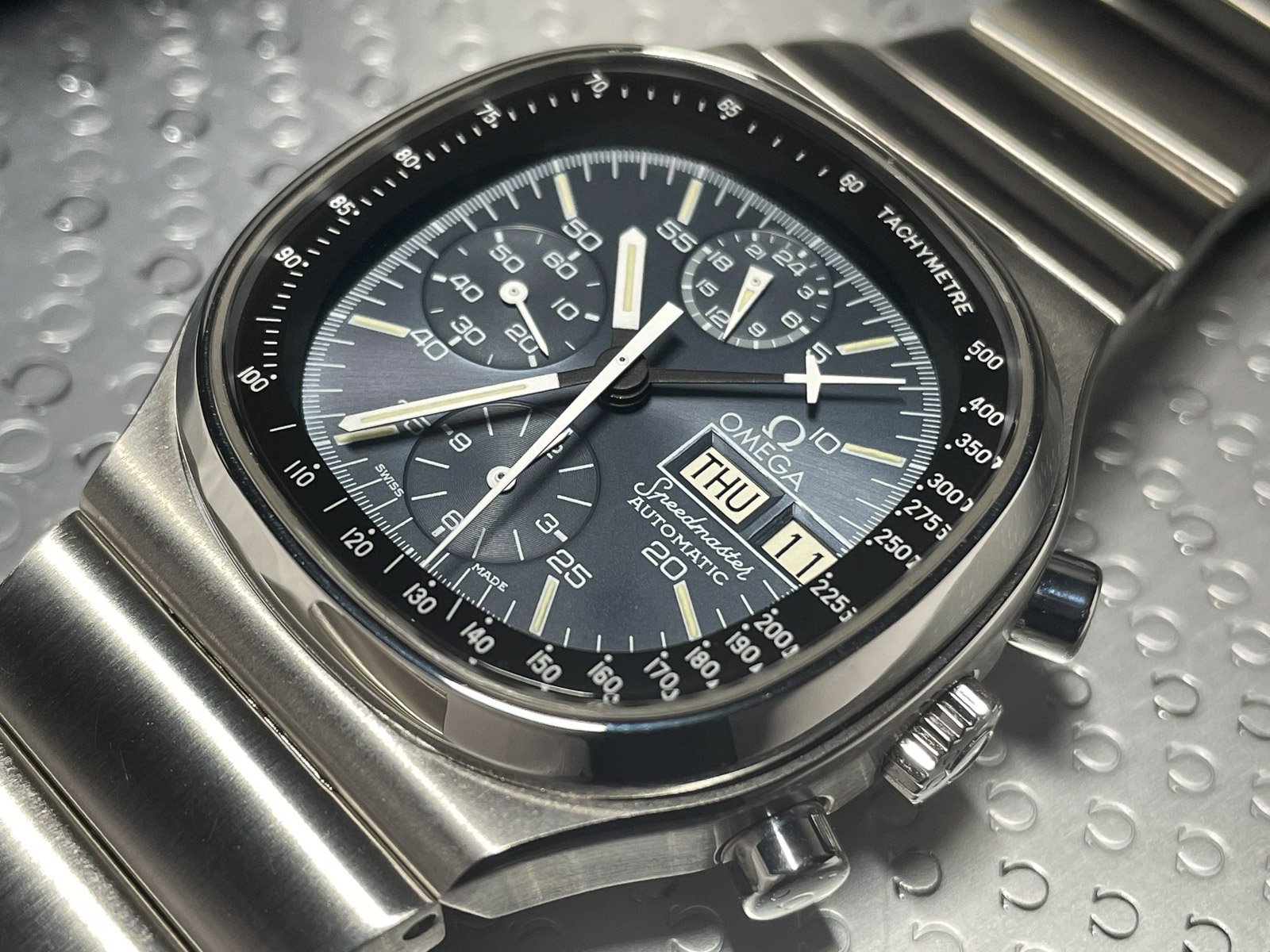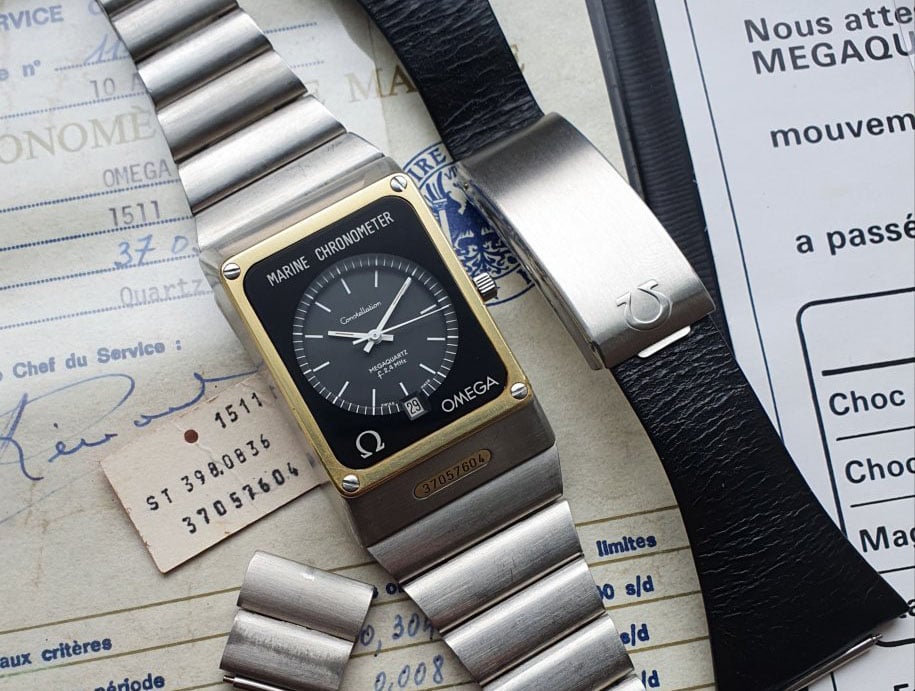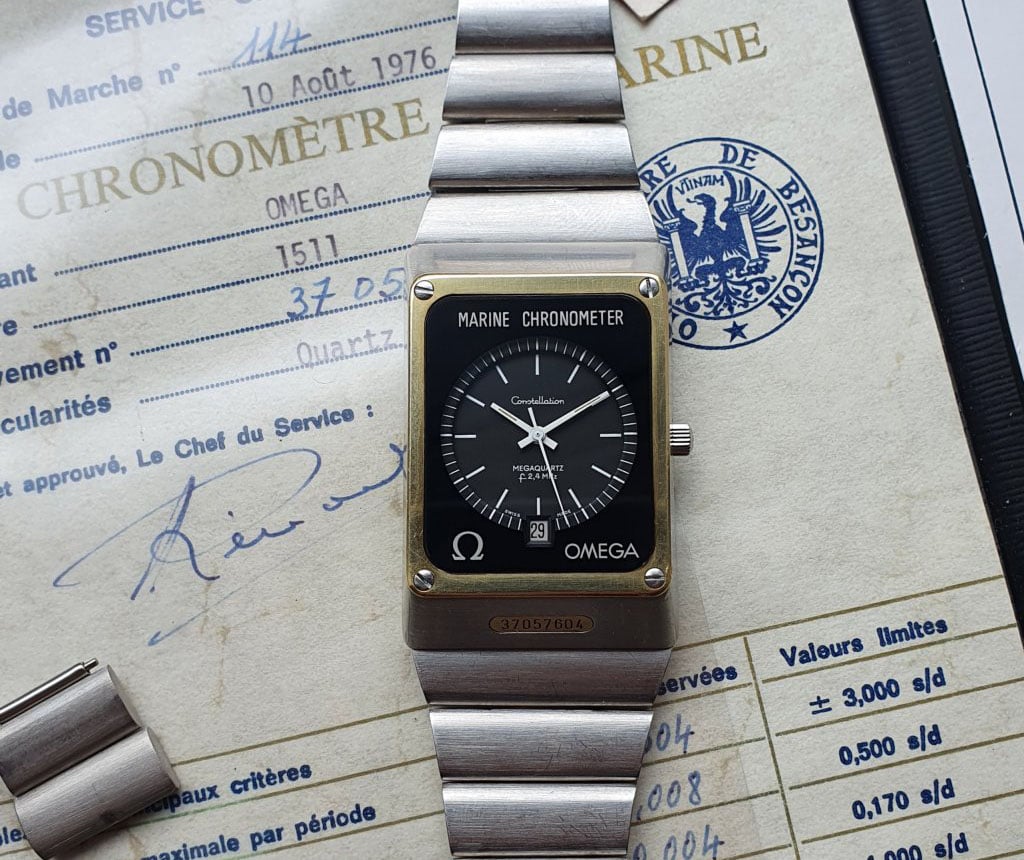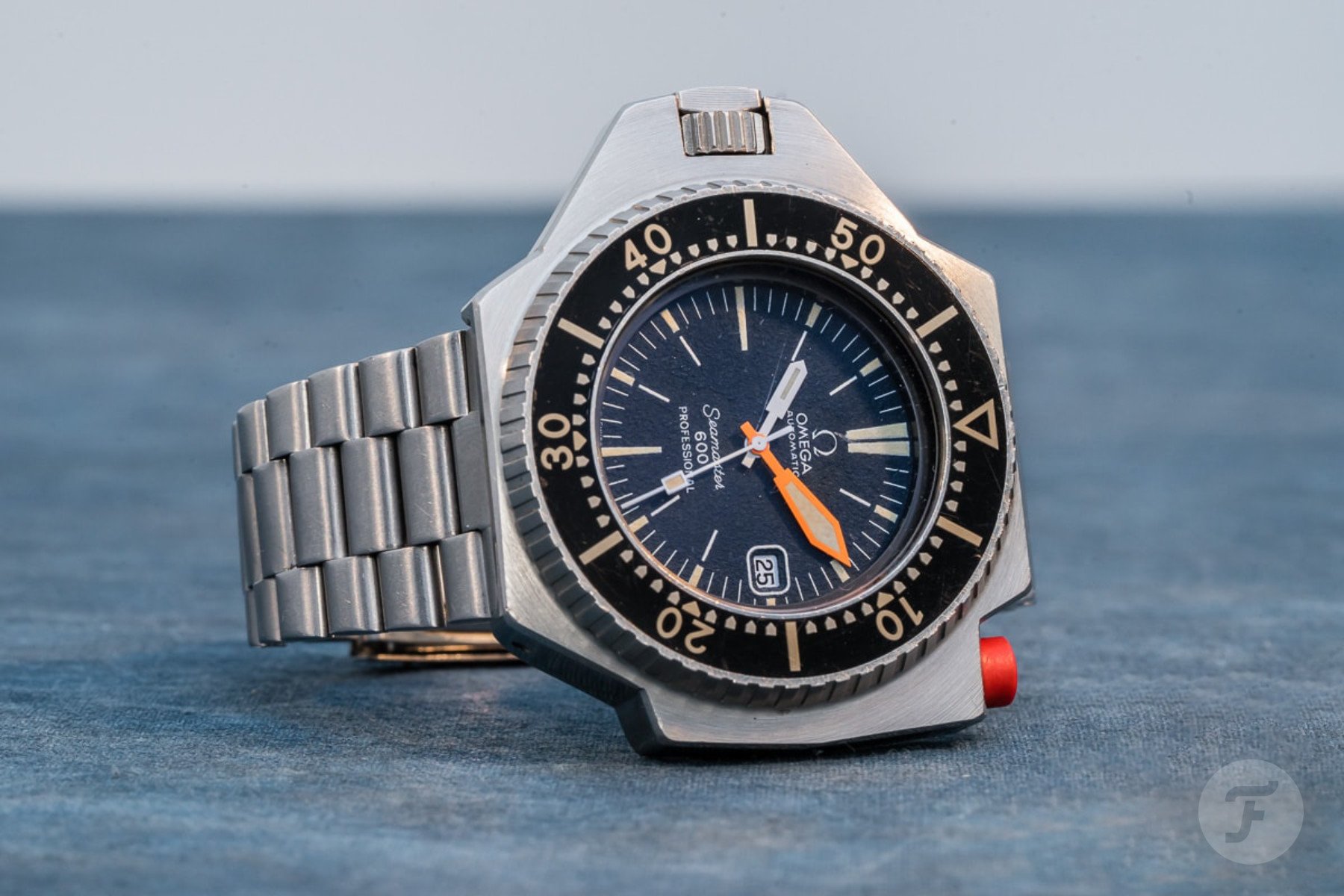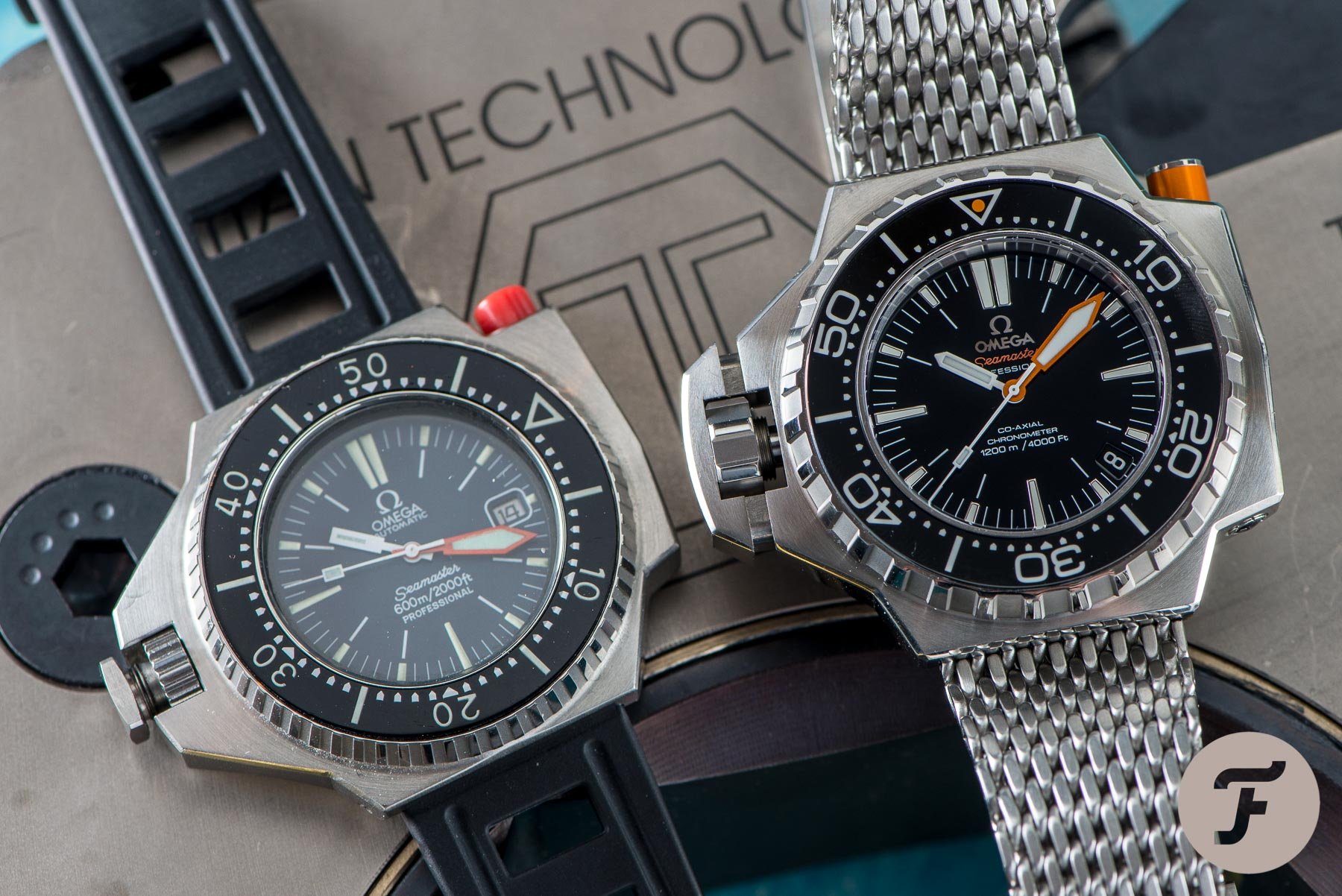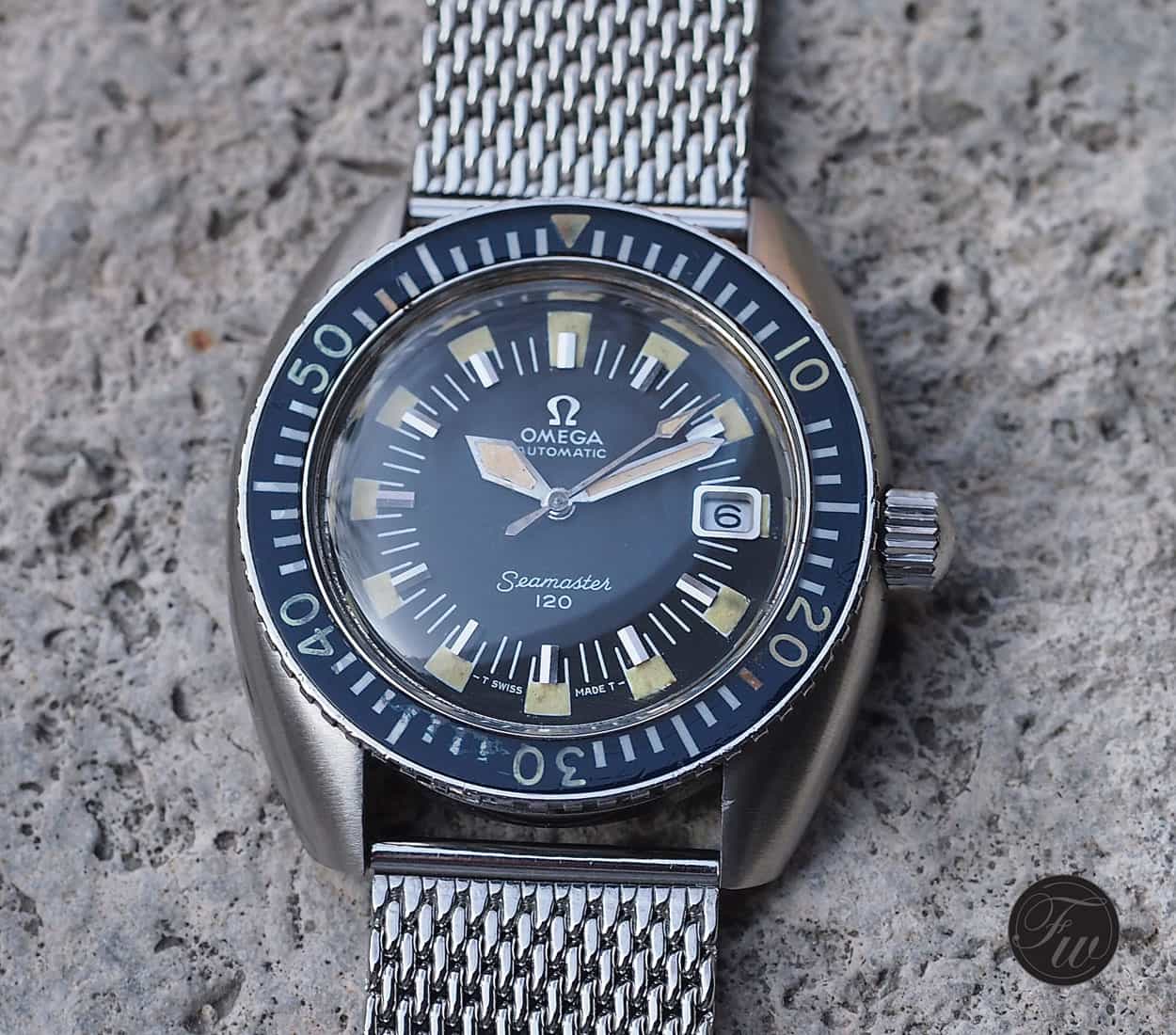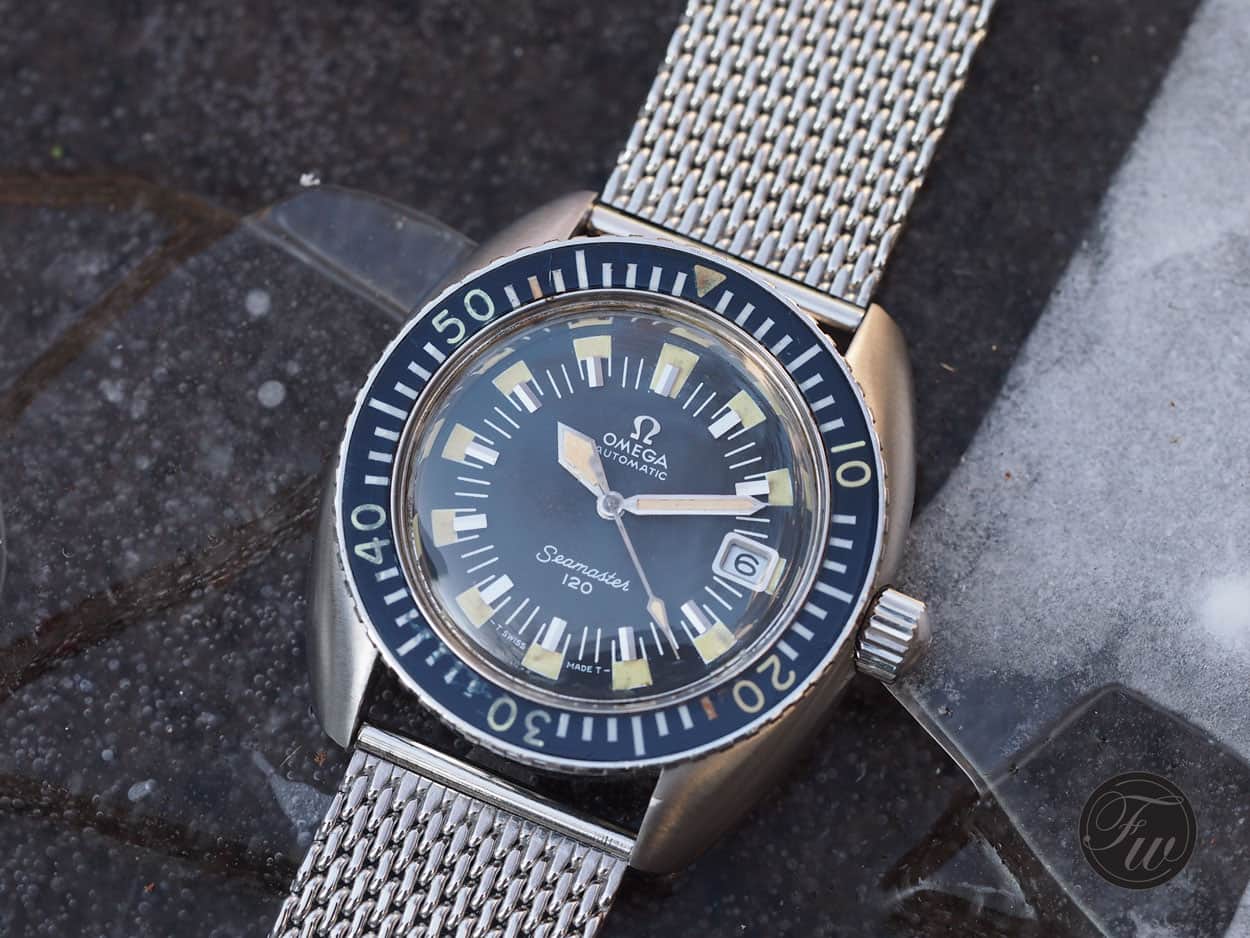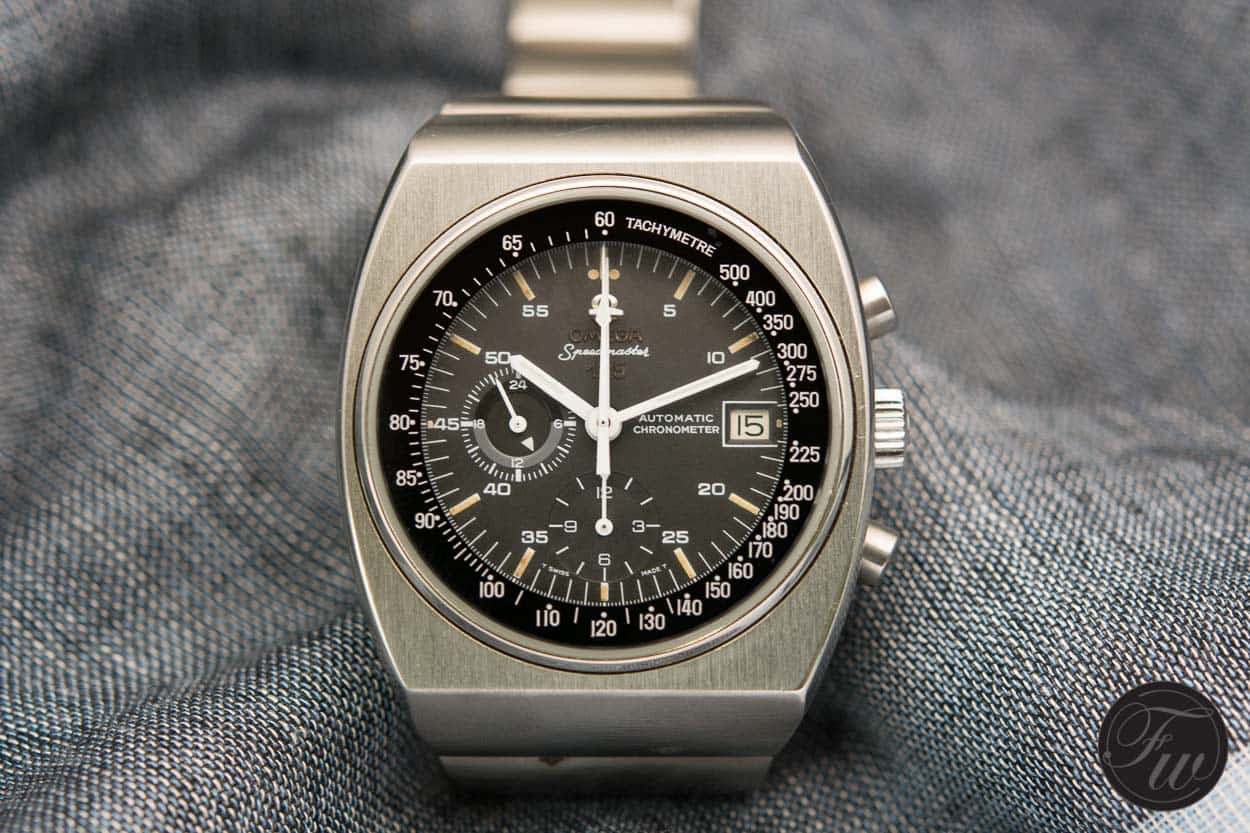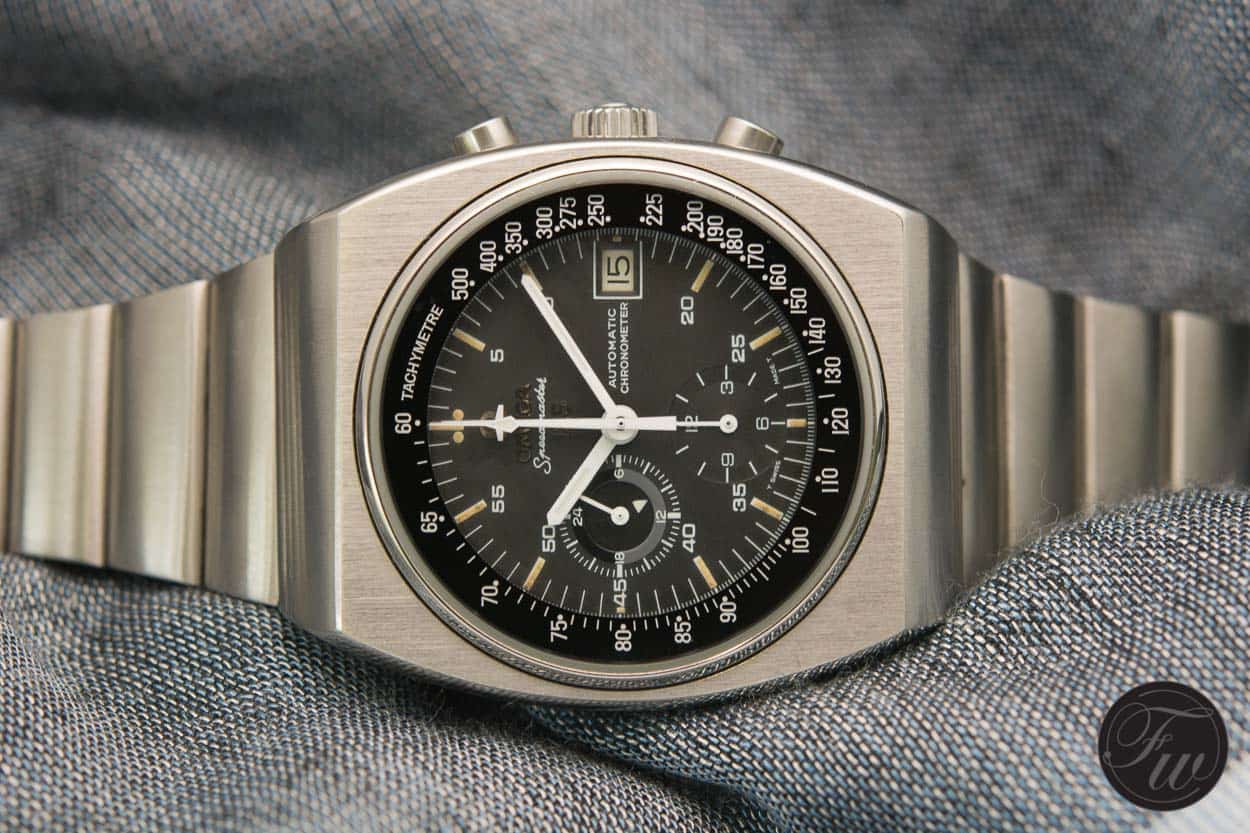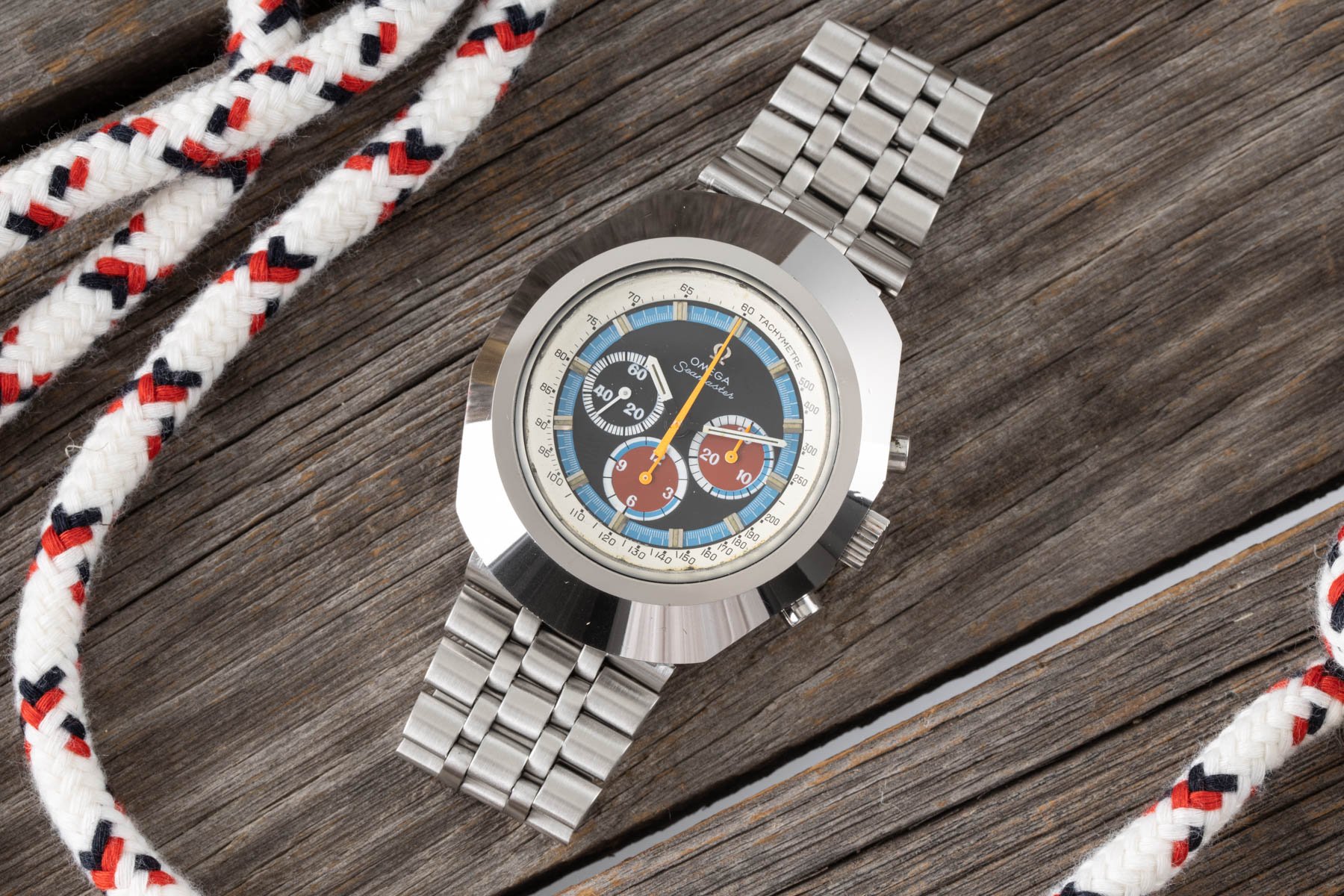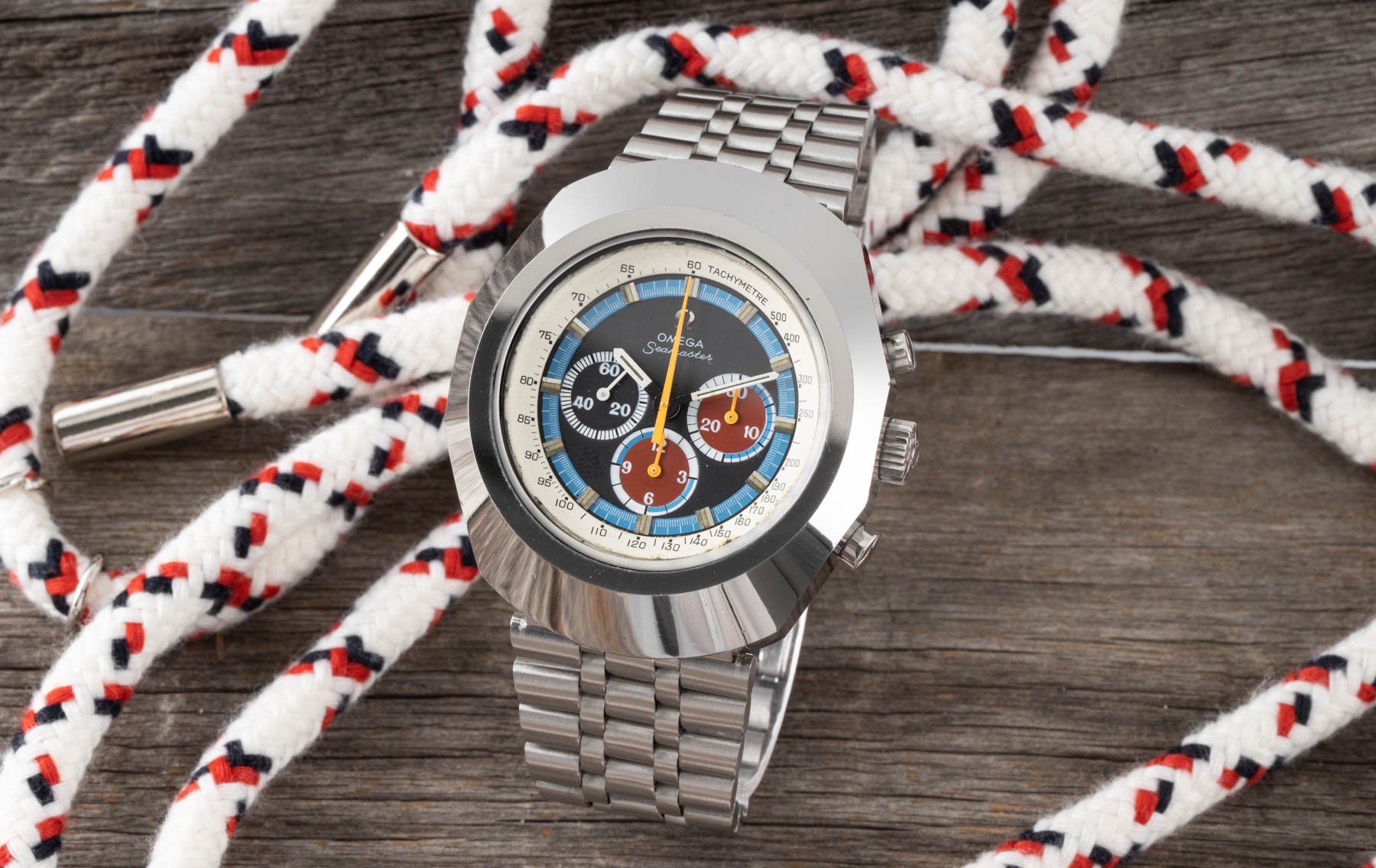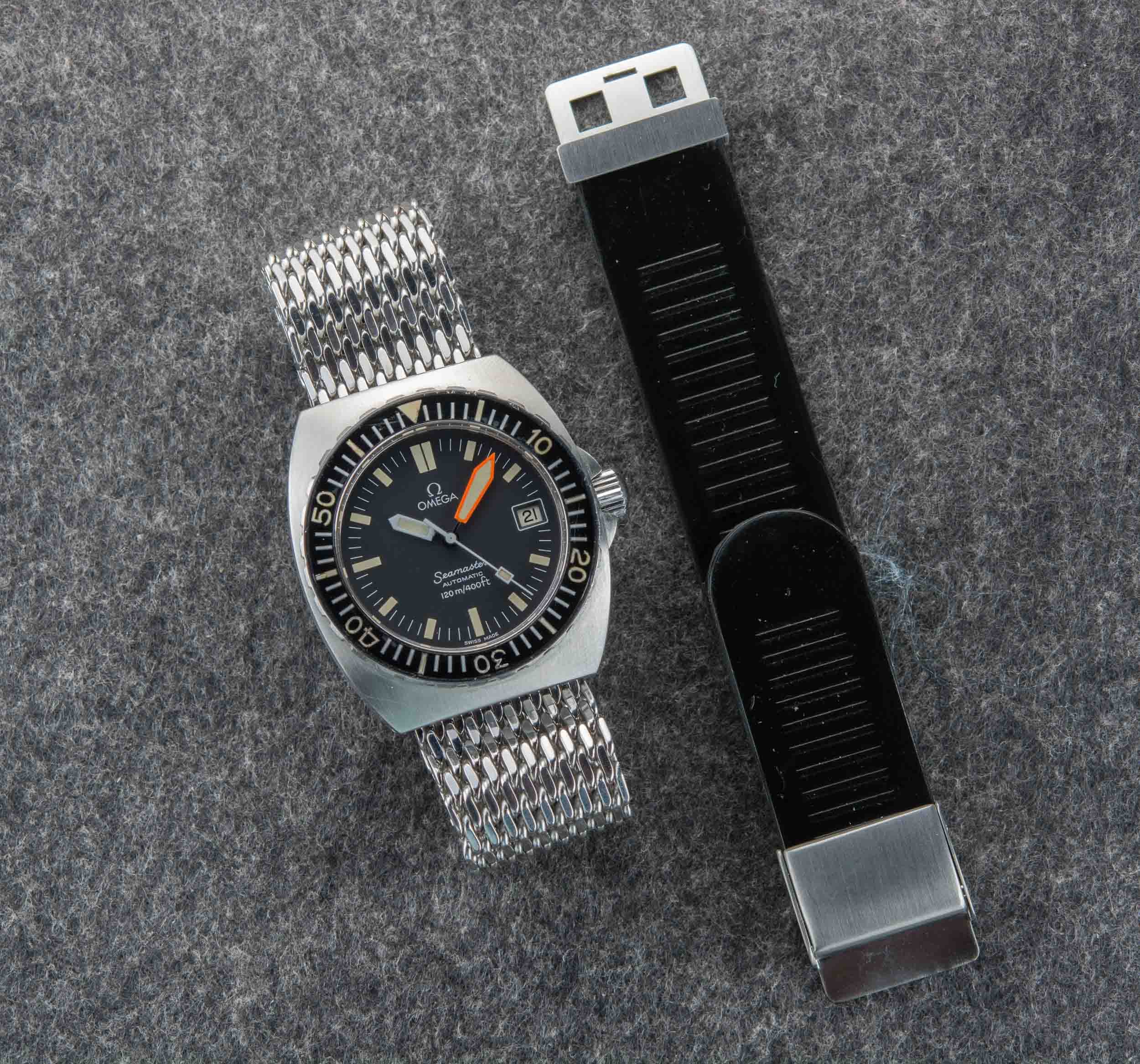Buying Guide: The Best Omega Watches From The 1970s
We like to talk about vintage watches a lot within the Fratello team. While the daily routine is largely focused on the most recent developments in the world of watches, the most fun for many of us lies in the world of vintage watches. It’s a world full of history, remarkable watches, incredible stories, and quirky details. It inspired us to come up with a series of articles focusing on the best watches per decade from a select group of brands. Some of them priceless, some of them still affordable. In this installment, we will take a look at the best Omega watches from the 1970s.
In the 1960s, we witnessed developments that challenged the status quo of watch design forever. The sheer amount of watches that pushed the visual boundaries of what was known and accepted was enormous. On top of that, we also saw great technical developments with the race to produce the first automatic chronograph as the most significant of the decade. The 1970s took it to a whole new level. When it comes to watch design, the seventies can only be described one way: no holds barred! The number of extravagant watches is countless. The quest for new shapes, the introduction of explosive colors, and the introduction of the automatic chronograph movement marked a wild time in the watch industry. It was a time that gave us some of the best collectible vintage watches ever.
Omega in the 1970s
Omega created some of their best designs in the 1970s. If you ask me, the brand actually created some of the best watch designs ever made in that decade. As a result, I wrote an article about some of my favorite Omega designs from the ’70s not too long ago. It’s a list of five great Omega designs from that era. As I explained in the aforementioned article, I have developed a slight obsession with Omega watches from the seventies over the years. Therefore it was rather easy to compile a list with the most remarkable models from the 1970s. Picking watches for this list was truly like being a kid in a candy store.
As you will find out, Omega created some of the most colorful designs in their history. Omega truly embraced the ‘no holds barred’ philosophy to come up with some amazing watches. And the best thing is that not all of them have become expensive icons that will empty your pockets. It is perfectly possible to find a nice Omega from the seventies for a good price. And when you do, you will soon find out that it will bring you as much fun as many more expensive icons.
Speaking of which, the Speedmaster Professional Moonwatch is the obvious elephant in the room. I tend to stay away from the Moonwatch in these series as we have our Speedy Tuesday articles to help you out on those. Omega’s biggest icon gets a lot of coverage on Fratello, and I like to mix things up for these articles. That doesn’t mean there is no room for a Speedmaster, though. Let’s find out what some of the best are from Omega from the 1970s.
The entry-point — Omega Constellation Marine Chronometer ref. 398.0836
Let’s start this list with something that oozes ’70s style. The Omega Constellation Marine Chronometer ref. 398.0836 is the epitome of a 1970s watch because of its style and its quartz movement. During the most stylish decade ever — I’m not kidding — even the Constellation collection got an injection of wild and quirky design. The rectangular-shaped case was manufactured in Italy by Fernando Fontana and produced in Sesto Calende. It was cut from a single block of steel, and looking from the side, it has the style of a truncated pyramid. Add the 14ct gold bezel, the characteristic screws, and the typical way of integrating the text in the dial, and you end up with something extraordinary.
The case dimensions are 32.7mm wide, 49mm in length, and 12.9mm thick. The original bracelet that came with the watch was a solid heavy-links bracelet that gives the watch extra ’70s style. Putting the watch on your wrist is like putting a bracelet on your wrist. But don’t be fooled because this is a technical masterpiece. When Omega started developing its 2,4 Mhz Megaquartz series, the brand had set their minds to developing the most accurate quartz timepiece ever. And in 1974, when the Constellation Marine Chronometer was introduced, it had been certified as a “Marine Chronometer” with a routine variation of fewer than 0.002 seconds per day. Until this day, it makes it the only wristwatch ever to receive this extraordinary distinction.
Unbeaten accuracy and style
Looking at the catalog from back in those days, the watch was marketed as having a deviation of a maximum of one second per month. As a result, Omega had to come up with a way to set the seconds hand. To do so, the brand came up with a system called TSA (time second adjustment). It lets you adjust the hour hand independently with the crown. A separate small pusher next to the crown was introduced to hack the second hand with the atomic time signal for ultimate accuracy. The initial movement that made this possible was the Omega Caliber 1511. For the non-Marine Chronometer versions of the Megaquartz line, Omega used the Omega Caliber 1510. For a long time, people believed that Caliber 1510 was less accurate. That, however, turned out to be not true.
Later models (ref. 398.0832) used the Omega Caliber 1516 and featured a smaller case. The true magic for me is in the original ref. 398.0836 with its bigger case. A total of 5682 Omega Marine Chronometers were tested and certified in Becsançon. As they are made up of Caliber 1511 and Caliber 1516, the number of watches with ref. 398.0836, and Caliber 1511 is even smaller. The unique production number on the small plate on the case will tell you more details about your watch. The guys are omegamegaquartz.com did a great job in researching the different references. It’s not hard to find an Omega Constellation Marine Chronometer. There are always several pieces available on different platforms. Prices start at roughly 2.5K and move up to 4K for a piece in great condition. What you will get in return is unbeaten in both style and accuracy.
My Choice —Omega Seamaster Ploprof 600M ref. 166.077
My pick for this list was the first one I put down for this list. There is only one vintage Omega that is higher on my list, and that is a Speedmaster Professional 145.022-76 from 1977, my year of birth. But as I mentioned, we have the Speedy Tuesday articles for the Moonwatch, including Robert-Jan’s brilliant article on his Speedmaster Professional 145.022-76 from 1977. But a close second is this Seamaster Ploprof 600M ref. 166.077. I explained my love for the Ploprof 600M in an article I wrote about the stainless steel Ploprof 1200M from 2009. In the early 2000s, Robert-Jan and I visited fellow Fratello team member Gerard’s store as we did regularly back in those days.
I still remember seeing that freakishly bold watch with a big red button on it, and from the moment I laid eyes on it, I was sold. The standout feature is, without a doubt, its case design. Those odd shapes scream, “Who needs symmetry?” Obviously, this is born from functionality as the watch is made for professional divers, hence Plongeur Professionel. The watch was introduced in 1971 and featured an asymmetric solid monobloc case made of high-grade stainless steel. With its protected crown, locking screw, and the red button for turning the diving bezel, it is one of the most recognizable watches in the watch world and one of Omega’s most iconic creations ever made.
Hard to find one in original condition
Inside the case, you will find the automatic Omega Caliber 1002. It’s a straightforward movement with a date function and hacking seconds that Omega used for more of their watches. As the Ploprof 600M was a professional tool watch, they were often used by professional divers. As a result, they had to come back in for service quite regularly. It’s when Omega often replaced dials, bezel inserts, hands, and movements. A great resource for seeing all the different versions Omega of parts used for the Ploprof can be found at omegeploprof.com. You will quickly find out that many of the parts have been replaced by the produced watches. That is why it’s challenging to find a Ploprof 600M in original conditions.
While a watch in original condition is often the ultimate goal for watch collectors, when it comes to the Ploprof, you might want to change your expectations unless you would like to pay significantly more for one in original condition. Prices for a Ploprof 600M ref. 166.077 start at roughly 6,5K and move up to around 10K for one on good condition. A fun fact is that only two weeks ago, Phillips auctioned one of the original prototypes Omega produced in 1968 to be delivered for active use in the Janus experimental dive by COMEX. This unique piece was sold for a whopping price of CHF138,600. That’s a lot of money for what is, without a doubt, one of the biggest Omega icons ever. I love it because its design is unique, and it was originated from a functional need. And that’s what makes the Plopof story incredibly compelling.
Money is no object #1 — Omega Seamaster 120 “Deep Blue” ref. 166.073
In a category of non-professional diving watches, we find this Omega Seamaster 120 “Deep Blue” with ref. 166.073. With the 120 referring to the 120 meters water resistance, this Seamaster was still a great diving watch for most sports and recreational divers in the 1970s. The Seamaster “Deep Blue” was introduced in 1970 and stayed in production until 1974. Fratello’s own Mike actually owns one and wrote about his “Deep Blue” in this in-depth article.
The stand-out feature is, without a doubt, the combination of its dark blue bezel and — almost black — dial color. It has to be said that the blue color changed of both the dial and bezel. Earlier models feature a lighter blue dial than later models that had an almost black dial. And Omega also used two different colors for the bezel. On top of that, the wording on the dial also changed. Some watches have “Seamaster” only on the lower part. Others have “Seamaster 120” blue or dark blue like Mike’s in the picture. And lastly, there are “Seamaster 120” Luminova replacement dials.
Different colors and designs
Next to the color, another stand-out feature is the funky dial design. As you can see, the dial features big tritium hour markers with baton-shaped metal hour markers placed on top. For some, it might be too much. I think it gives the watch a layered and unique look. On top of that, the sword-style hands make sure that reading the time is never an issue. Inside the 41mm cushion-shaped steel case, Omega used the in-house automatic Omega Caliber 565. The movement was also used for the famous Seamaster 300 and features a quickset date and can be hand-wound. It is considered a robust workhorse movement that will get the job done and is fairly easy to service.
As with many vintage Omega watches, finding a Seamaster 120 ‘Deep Blue’ in original condition is tough. Most tritium dials have been replaced over time, and the hands and bezel have also been replaced in many cases. Having said that, the watch has a great deal of charm, either in original condition or with replacement parts. The blue color is absolutely stunning and combined with the dial design and the case shape, making for a stunning watch. And it’s a watch that is also greatly appreciated by collectors because prices have risen over the years. An Omega Omega Seamaster 120 “Deep Blue” with ref. 166.073 will cost you roughly between 3,5K and 6K. Depending on the condition, it will buy you a seriously cool watch.
Money is no object #2 — Omega Speedmaster Professional 125 ref. ST 378.0801
One of the most iconic Omega watches from the 1970s is without a doubt the Speedmaster Professional 125. Next to the Moonwatch from my year of birth and the Ploprof, it’s probably third on my list of vintage Omega wants. The watch is notoriously hard to wear due to its big ‘rectangular’ shape and substantial weight. These two features are a big reason why prices for the Speedmaster 125 have not skyrocketed like for some of the other Omega classics. But if you can pull off a watch this size — thankfully, I can — it’s actually rather wearable. On top of that, this is one of the most iconic Omega watch designs from that era.
Omega introduced the Speedmaster Profession 125 (ref. ST 378.0801) in 1973 to celebrate the 125th anniversary of the foundation of Omega in 1848. For the occasion, Omega introduced multiple anniversary models, but this Speedmaster 125 is the one that stood out due to its shape, size, and technical achievements. The case measures 42mm in width, a whopping 51mm in length. The watch weighs 182.9 grams, thus making it seriously heavy. The case of the watch consists of two parts. A round center part hold holds the movement and the acrylic crystal and the outer frame, which gives the Speedmaster 125 a square shape and holds the integrated bracelet. The inner round case is pushed into the square case frame, where an O ring/gasket holds the case in place. In combination with the integrated bracelet, the case construction gives the Speedmaster 125 its unique ’70s cool.
Higher Production numbers
Technically the Speedmaster 125 was quite the achievement. The movement used in the Speedmaster 125 is the Omega Caliber 1041 that is based on the Lemania Caliber 1341. It is an improved version of Omega’s Caliber 1040 movement that was the first self-winding chronograph movement used by Omega. Caliber 1040 was used for the Speedmaster Mark III, Speedmaster Mark IV, and several Seamaster models from 1970-1976. Caliber 1041 is so special because it’s the world’s first chronometer-certified automatic chronograph movement. And it’s a movement that Omega only used for this unique Speedmaster 125.
When it comes to production numbers, it has long been believed that only 2,000 pieces were produced. In a 2018 article, Balazs explained in an in-depth article that the exact number is probably a lot higher. The watch was in production from June 1973 until November 1977, and Omega has not confirmed the actual production numbers but they are likely significantly higher than has long been thought. It’s something that has been speculated on for a long time as finding a Speedmaster 125 is not really all that difficult. Prices for one are roughly between 2,5k and 5K for one in great condition. If you can actually wear this Speedmaster Professional 125, it is truly one of the best watches from the 1970s. It’s exactly why it’s high up my list future of must-haves.
Money is no object #3 — Omega Seamaster “Anakin Skywalker” ref. 145.023
The Omega Seamaster “Anakin Skywalker” ref. 145.023 is the perfect watch to close out this list of the most remarkable Omega watches from the 1970s. As Lex perfectly explained in his article about the watch from a couple of weeks ago, it’s a massive watch. Especially at the time of the introduction in the early seventies, it was considered huge. The case measures 44.5mm in diameter, 14.5mm in height, and 51mm in length. The watch is part of a duo of Seamaster ref. 145.023 watches. The second is the same watch with a black PVD coating commonly referred to as the “Darth Vader.” As many will know, the nicknames for both these watches come from Omega expert and collector Chuck Maddox. He was also a huge Star Wars fan, and it’s why he came up with the name for both.
There are a couple of remarkable features that make this such a stand-out watch. First of its size, in combination with its helmet-shaped case, make for a watch that has plenty of presence. But the case is a two-piece case. As with the Speedmaster 125, there is a stainless steel center part that holds the movement. The second part is a tungsten shell with a chrome coating. As s result, the case gets a gleaming presence that is as impressive as five decades ago. Another great element is the incredibly colorful dial. It is a true eye-catcher and definitely extravagant. But Omega made sure that legibility was guaranteed. Another nice detail is the hidden lugs. Not uncommon at the time as Omega also used that design for the Speedmaster Mark III.
Why is it a Seamaster?
Another remarkable detail about the “Anakin Skywalker” is that it was part of the Seamaster collection. Sure, the watch features a screw-down crown for water resistance, but its looks, functionalities, and dial design are anything but stereotypical for a diving watch. In all three departments, it’s actually closer to a Flightmaster or some of the Speedmasters from that era. Inside the case, Omega used the trusted hand-wound Caliber 861 to power the Seamaster 145.023. Omega introduced the movement based on the Lemania Caliber 1873 in 1968 and used to for a string of Speedmaster models from that era, including the iconic Speedmaster Professional.
When it comes to wrist presence, nothing in this list beats the Omega Seamaster 145.023 “Anakin Skywalker.” This watch stands out from a mile away. But if you can pull off a watch this big and you like colorful and funky design, this is an amazing vintage Omega from the 1970s. Having said that, the prices for the Seamaster 145.023 “Anakin Skywalker” have gone up over time. The most affordable ones start at roughly 5K and for pieces in better condition, expect to pay up to roughly 15K. That is obviously some serious money, but then again, this is a very serious piece of kit with some great seventies style.
Final Thoughts
In this series of articles, I cannot stress enough to do your research if you are looking to buy a vintage watch. On top of being crucial in not becoming disappointed with your purchase, it is also a lot of fun. Doing research and finding out about the watches you love is often the first connection you will make to a specific watch. Try to get your hands on Omega — A Journey Through Time and Moonwatch Only. Contacting a vintage expert will also help out a lot. It’s a great way to learn more about a watch and get to know some amazing people along the way.
There are so many great watches to choose from when it comes to vintage Omega watches from the 1970s. After creating two lists, I can honestly say it’s still not enough. There are so many more incredible Omega watches from the 1970s. From the Speedmaster Mark series to the Speedsonic to the Cosmic series, to the Baby Ploprof (pictured). And the list goes on. Exploring the world of Omega in the 1970s is a great joy. The brand has created some of the most iconic, quirkiest, and most remarkable watches of that era. So I suggest finding the ones you really love. Happy hunting!
Next week, we will take a look at some of the best Seiko watches from the 1970s, so keep your eye out for that. In the meantime, let us know in the comment section what your favorite Omega from the 1970s is.

